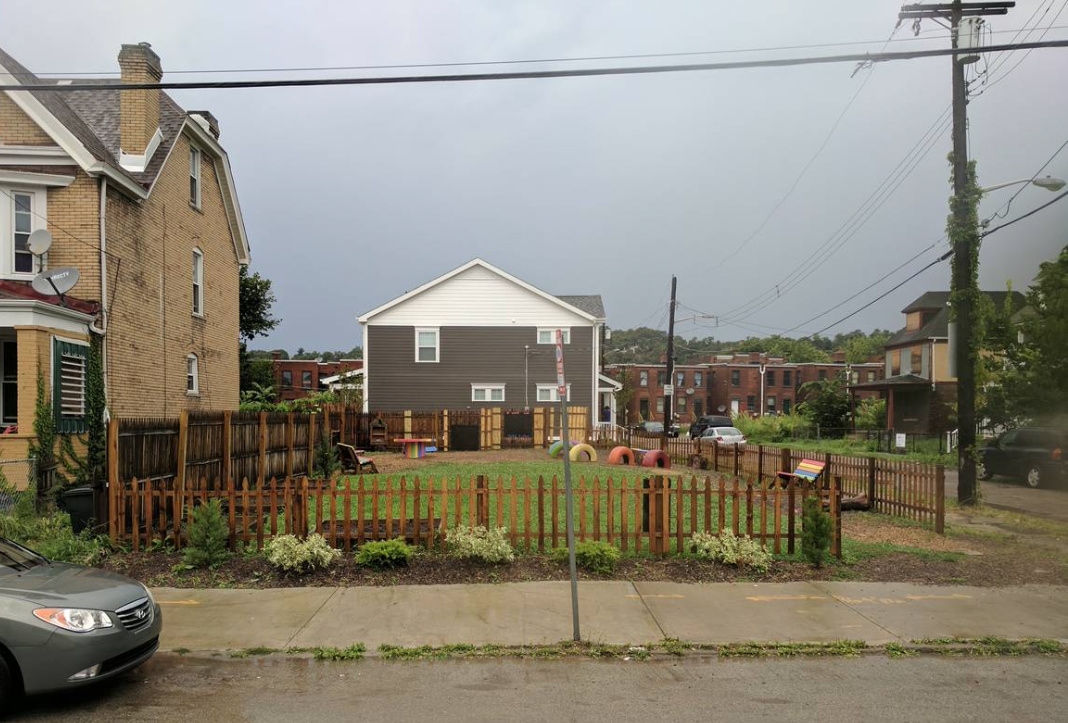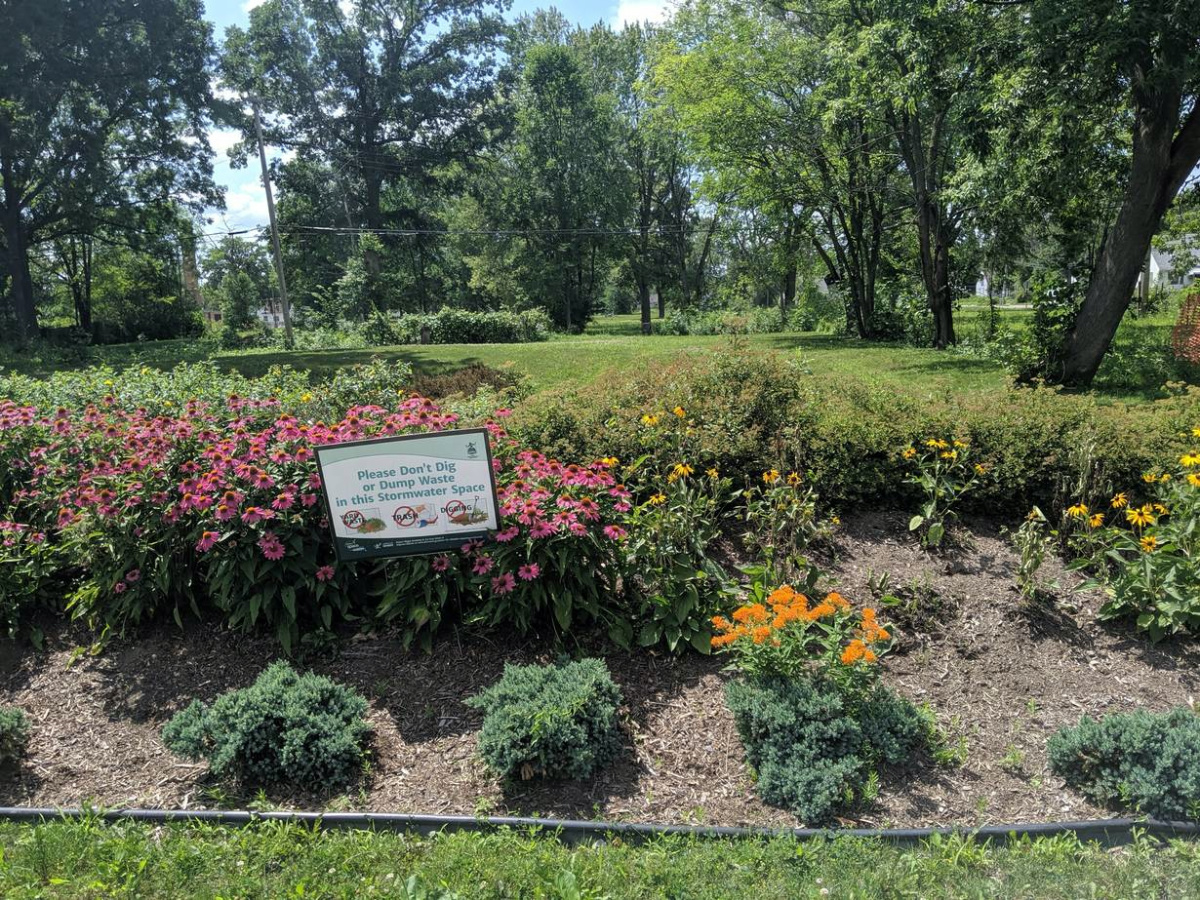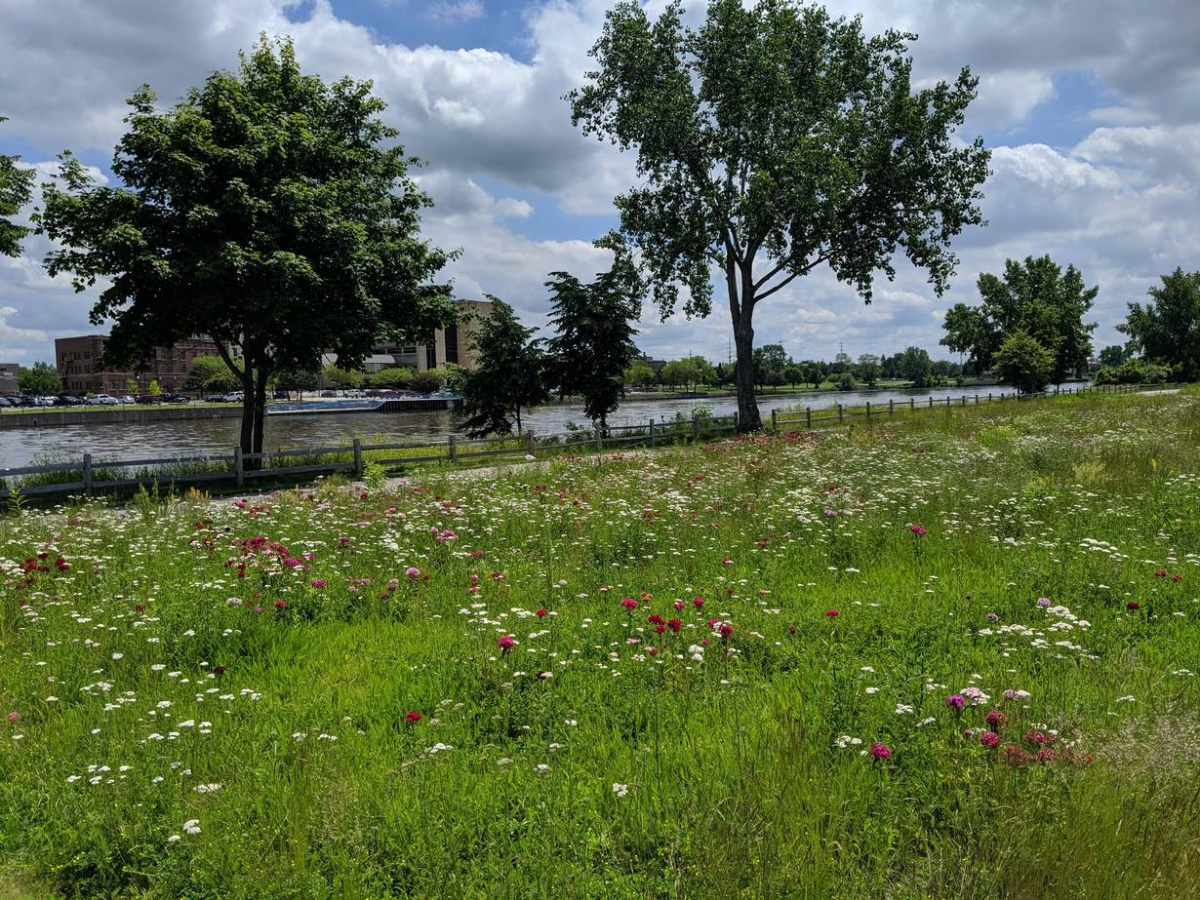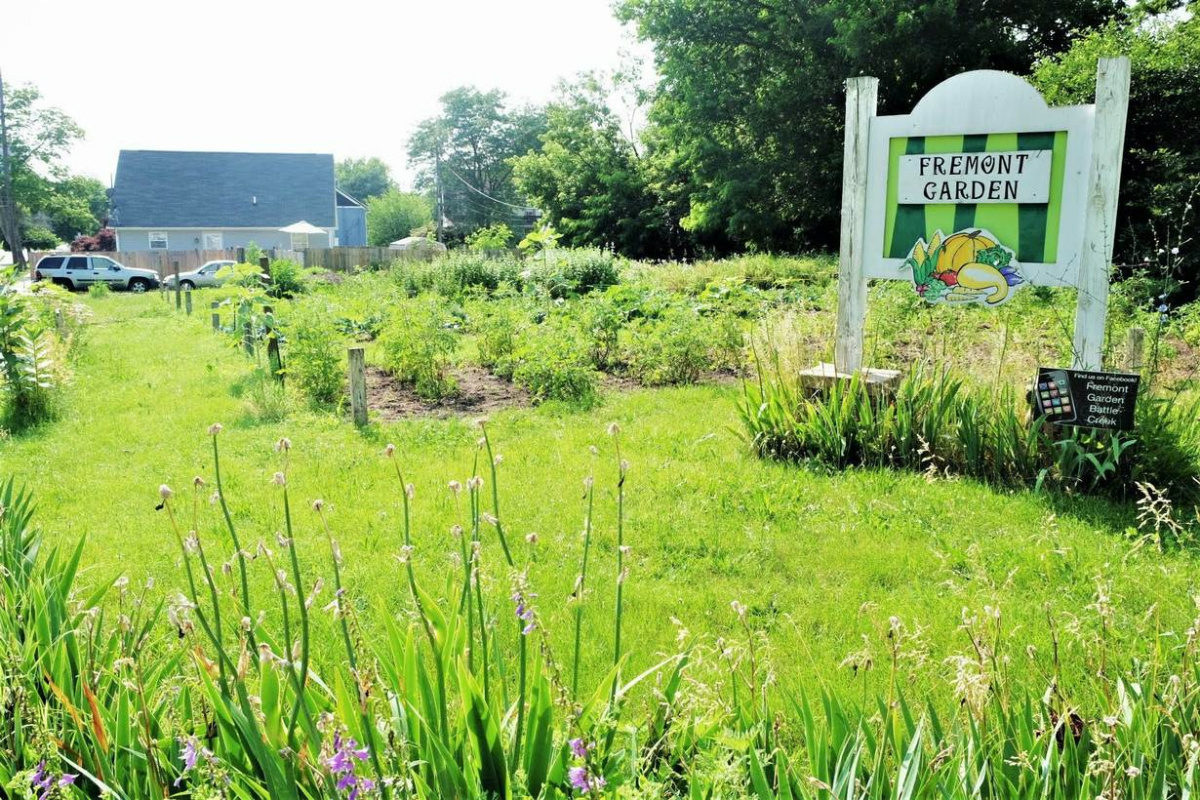
CAREY L BIRON, of Thomson Reuters Foundation, reports on how, with federal pandemic aid on offer for revitalisation, some local governments in the US are using empty parcels to respond to local needs…
Washington DC, US
Thomson Reuters Foundation
The Brightmoor neighbourhood in Detroit, Michigan was already decaying when the recession hit more than a decade ago, said resident Luis Cuenca, leading droves of people to simply walk out on homes they could no longer afford.
By 2010, one in every four homes in Brightmoor was vacant, according to the local research group Data Driven Detroit. Soon, the demolitions followed – as did the chance to do something different with the empty spaces left behind.
“There were lots of empty lots, which went from being sporadic to being whole sections,” said Cuenca, who is in his 40s and a member of the board of Neighbors Building Brightmoor, a residents’ group created in 2009.
“So, the opportunity was there to group together certain empty lots and make them into gardens or pocket parks or green areas for people to take part in social events,” he told the Thomson Reuters Foundation.

A “pocket park” on a vacant lot in Pittsburgh neighbourhood, seen in August, 2017. PICTURE: Handout photo by the Center for Community Progress.
The first effort was a youth garden, which in turn spurred project after project – including a tool library and a greenhouse – transforming one block to the next.
Empty lots often lead to other parts of a city falling into neglect and disrepair, revitalization experts say, and as vacancy has increased across the United States over the past decade, cities have struggled with how to respond.
“While vacant lots are neutral, they can be a detriment or an asset.”
– Janell O’Keefe, a senior program officer with the national Center for Community Progress, a non-profit focused on revitalisation.
But cities could soon have help turning their empty lots into vibrant community spaces that respond to local needs.
In January, the federal government confirmed that a $US350 billion federal pandemic aid package can be used to address vacancy, freeing up significant funding for local officials.
“Most of these [vacant lots] exist in city markets that aren’t strong enough to support rehab and repair, but especially not to support infill,” said Janell O’Keefe, a senior program officer with the national Center for Community Progress, a non-profit focused on revitalisation.
“While vacant lots are neutral, they can be a detriment or an asset,” O’Keefe said, noting empty parcels can be used to address a variety of community needs, such as stormwater management, affordable housing or simply open green space.
“This is the turning point. There’s real opportunity here,” she said.
That change is already being felt in Detroit’s Brightmoor, where the “Brightmoor Farmway” today includes about 50 gardens and full-sized farms, Cuenca said.
“By far, it’s safer,” he said about his neighbourhood, noting major declines in drug dealing, gang activities and related violence since the Farmway was created.
“It’s very lush. In the summer, it’s really beautiful – like being in the countryside.”

Vacant land in Detroit works to help control stormwater in 2019. PICTURE: Handout photo by the Center for Community Progress.
There are no comprehensive statistics on vacant lots across the United States, though the Center for Community Progress puts the number in the hundreds of thousands.
A 2020 report from the center and the Michigan Youth Violence Prevention Center found that nearly two-thirds of surveyed organizations dealing with vacancy said their inventories – mostly empty lots – had risen in the previous two years, in the wake of the 2009 housing market crash.
Some cities have already started mobilising to use the federal pandemic relief funding to address vacancy.
Chicago is finalising the details of an $US87 million plan to “reactivate vacant city-owned land and build community wealth by…transferring ownership to neighbourhood residents for community benefit,” a spokesperson for the mayor’s office said in an email.
Milwaukee, Wisconsin, wants to use pandemic aid to help build new climate-friendly “net-zero” homes on vacant lots, said Erick Shambarger, the city’s environmental sustainability director.
That work will build on the city’s HOME GR/OWN project, which over the past decade has been working closely with local communities to address a vacancy problem that Shambarger likens to a neighbourhood’s “missing teeth”.
HOME GR/OWN has helped green about 100 vacant lots, resulting in 17 community parks in addition to stormwater management systems, internet hot spots, orchards and a farm operation, Shambarger said.
“These vacant lots can be very tangible things in the neighbourhood, creating opportunities to get neighbours out to help conceptualise them, design them [and] build them,” Shambarger said.

Native plants proliferate on formerly vacant waterfront land in Saginaw, Michigan, in 2019. PICTURE: Handout photo by the Center for Community Progress.
In September, the Center for Community Progress published a growing database of dozens of innovative vacant-space projects across the country – event spaces, exercise areas, agricultural initiatives and more.
Yet O’Keefe at the centre said no city has yet adopted a comprehensive approach to using its vacant properties.
That’s in part because local officials are hesitant to give up hopes that those lots could be redeveloped in the future, even as understanding has evolved about what makes a neighbourhood healthy, safe and climate-resilient, she said.
We rely on our readers to fund Sight's work - become a financial supporter today!
For more information, head to our Subscriber's page.
“Is it appropriate to put a house back on every lot? Or do we look at this as an opportunity to design and build neighbourhoods better for the people who live there right now?” she asked.
In some places, that opportunity may be disappearing, said Sandra Albro, an expert on vacancy now with Holden Forests & Gardens, an arboretum and botanical garden in Cleveland, Ohio.
From 2012 to 2020, Albro was involved in the three-city Vacant to Vibrant program, aimed at using often very small vacant lots – many under 0.1 hectares – to address stormwater management problems underground and recreation needs on the surface.

A garden grows on formerly vacant land in Battle Creek, Michigan, in 2019. PICTURE: Handout photo by the Center for Community Progress.
Cleveland’s densely packed neighbourhoods, built up in the 1950s, are now plagued by flooding and sewer problems, she said.
As vacancies free up space in the city, empty land could be used to rebuild a more climate-smart metropolis, Albro said – but time is running out.
“Redevelopment is coming faster than minds are changing about what smarter city planning should look like,” she said.
“We’re seeing parcels fill up very quickly.”





